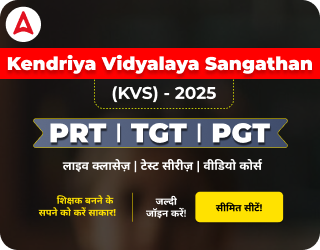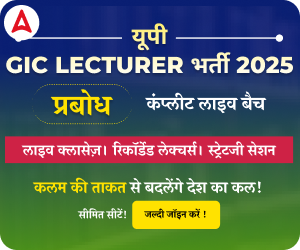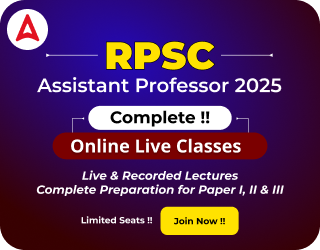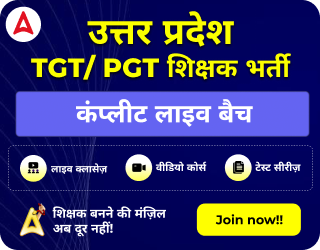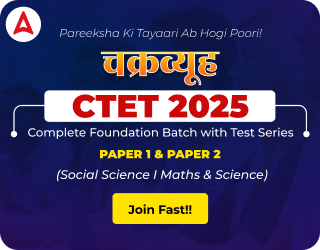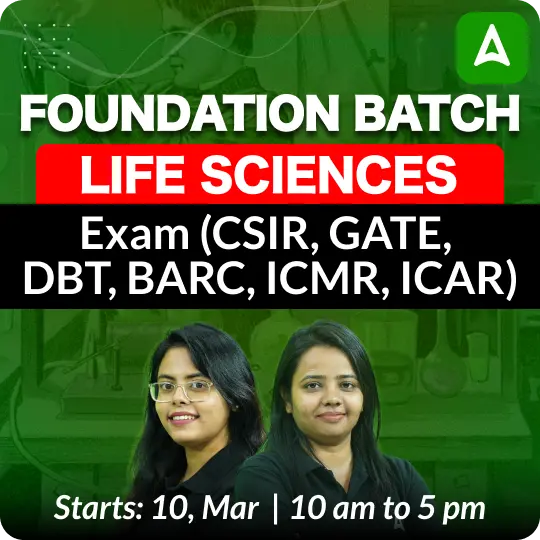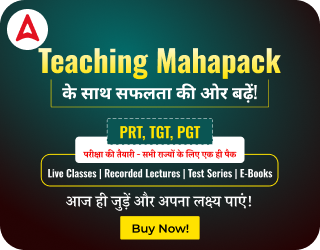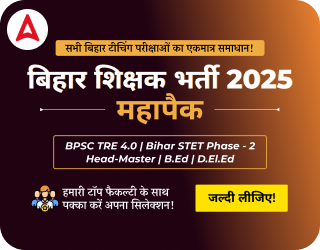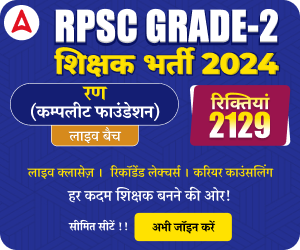Table of Contents
The Board of Secondary Education, Odisha (BSEO) has concluded the 1st shift of the Odisha Secondary School Teacher Eligibility Test (OSSTET) exam today 17th January 2025 at 12:30 PM. The exam is being conducted in the traditional offline (pen and paper) mode using an OMR sheet. As the exam concludes, aspirants will be eager to analyze the difficulty, question types, and overall insights to understand the exam level. Hence, our Adda247 team brought to you the OSSTET Exam Analysis 2025, which will answer all the aspirants’s queries. This article provides a comprehensive analysis of Paper 1 and will be updated with insights from the second shift for the Physical Education exam as the day progresses.
OSSTET Exam Analysis 2025
The OSSTET Exam 2025 Paper 1 was conducted in the first shift from 10:00 AM to 12:30 PM for Education Teachers. This paper focused on assessing candidates’ skills in language proficiency, pedagogy, and subject knowledge. It included sections on Language I (Odia), Language II (English), Child Development and Pedagogy, and subject-specific content tailored for Arts, Science, and Language Teachers. Paper 1 aimed to evaluate the knowledge and teaching aptitude required for secondary school teachers.
Paper 2 of the OSSTET Exam 2025 was held in the second shift, from 2:00 PM to 4:30 PM, specifically for Physical Education Teachers. While it shared similarities in structure with Paper 1, Section 3 focused on topics related to physical education, including principles, coaching, and training methodologies. This paper was designed to test candidates’ expertise in physical education and their ability to handle the unique demands of teaching in this field.
OSSTET Exam Pattern 2025
The OSSTET Exam is divided into two papers: Paper 1 for Education Teachers and Paper 2 for Physical Education Teachers. Both papers consist of 150 questions, carrying 150 marks, with sections covering languages, pedagogy, and subject-specific topics. Conducted offline using OMR sheets, the exam emphasizes theoretical knowledge and teaching skills. Here is the detailed OSSTET Exam Pattern 2025:
| OSSTET Exam Pattern 2025 |
||
| Aspect | Paper 1 (Education Teachers) | Paper 2 (Physical Education Teachers) |
| Shift Timings | 10:00 AM to 12:30 PM | 2:00 PM to 4:30 PM |
| Purpose | For teaching positions in Arts, Science (CBZ/PCM), and Languages | For teaching positions in Physical Education |
| Sections | Language I (Odia), Language II (English), Child Pedagogy, Subject-Specific Content | Language I (Odia), Language II (English), Child Pedagogy, Physical Education Topics |
| Section 3 Focus | Subject-specific knowledge based on the chosen teaching category | Physical education content like principles, coaching, and training |
| Total Questions | 150 | 150 |
| Total Marks | 150 | 150 |
| Mode of Examination | Offline (Pen and Paper) | Offline (Pen and Paper) |
OSSTET Exam Analysis 2025 for Paper 1
The OSSTET Exam 2025 Paper 1 was held in the first shift from 10:00 AM to 12:30 PM and aimed to evaluate the teaching capabilities of candidates aspiring for secondary school positions. This paper tested the foundational knowledge required for teaching at the secondary level, assessing both language proficiency and subject knowledge. The exam comprised 150 questions carrying a total of 150 marks, with each question worth one mark. Notably, there was no negative marking, which allowed candidates to attempt all questions confidently.
The difficulty level of the exam was balanced, designed to gauge the depth of understanding and teaching skills essential for a secondary teacher role. As the exam concludes, we’re here to provide detailed insights into the difficulty level, good attempts, and overall exam trends to help candidates evaluate their performance effectively.
OSSTET Exam Paper 1 Difficulty Level
The difficulty level of the OSSTET Exam 2025 Paper 1 was generally moderate to difficult, with questions designed to assess both language proficiency and teaching knowledge required for secondary school teaching. While the language sections (Odia and English) were straightforward, the subject-specific questions required a deeper understanding of key concepts. The section on child development and pedagogy also tested candidates’ awareness of teaching methodologies. Overall, the paper aimed to gauge a candidate’s readiness to teach at the secondary level. Here’s a subject-wise breakdown of the exam to give you a clearer view of its structure and complexity.
| Section | Subject | Difficulty Level |
| I | Language I (Odia) | Easy |
| II | Language II (English) | Easy To Moderate |
| III | Arts/CBZ/PCM/Language Specific | Easy |
| IV | CDP | Easy To Moderate |
OSSTET Exam Paper 1 Good Attempts
A good attempt for OSSTET Exam 2025 Paper 1 largely depends on the candidate’s preparation and time management across different sections. In Section I (Language I – Odia) and Section II (Language II – English), a good attempt would be answering around 15-18 questions in each, as these sections focus on language proficiency. In Section III (Arts/CBZ/PCM/Language Specific), candidates should aim for about 45-50 questions, depending on their subject expertise. For Section IV (Child Development, Pedagogy, School Management & Evaluation), targeting 40-45 questions would be a reasonable attempt. The overall good attempt would vary, but candidates could aim for 110-120 correct answers for a competitive score.
| Section | Subject | Good Attempts |
| I | Language I (Odia) | 15-18 questions |
| II | Language II (English) | 15-18 questions |
| III | Arts/CBZ/PCM/Language Specific | 45-50 questions |
| IV | Child Development, Pedagogy, School Management & Evaluation | 40-45 questions |
OSSTET Subject Wise Exam Analysis Paper 1
The OSSTET Exam 2025 Paper 1 covered multiple subjects, each with its focus and level of difficulty. Below, we break down the subject-wise analysis with topics, their difficulty levels, and the number of questions in each section. This will give you an overview of how the exam was structured and help you understand the weight of each subject.
OSSTET Exam Analysis Paper 1 (Child Pedagogy and Development)
The Child Pedagogy and Development section assessed candidates’ understanding of teaching methodologies, classroom management, and educational psychology. It emphasized conceptual clarity and real-world application of pedagogical principles. The section’s difficulty level was moderate to challenging, requiring thoughtful preparation and practical knowledge.
| OSSTET Exam Analysis Paper 1 (Child Pedagogy and Development) | |||
| Topics | Difficulty Level | Number of Questions | Good Attempts |
|
Easy | 50 | 40-45 |
OSSTET Exam Analysis Paper 1 [Language I (Odia)]
Language I (Odia) assessed candidates’ proficiency in the regional language, focusing on grammar, comprehension, and vocabulary. The section required a solid understanding of linguistic fundamentals and context-based language application. It played a crucial role in testing candidates’ ability to communicate effectively in Odia, vital for secondary teaching roles.
| OSSTET Exam Analysis Paper 1 [Language I (Odia)] | |||
| Topics | Difficulty Level | Number of Questions | Good Attempts |
|
Easy | 20 | 15-18 |
OSSTET Exam Analysis Paper 1 [Language II (English)]
Language II (English) evaluated candidates’ grasp of the English language, including grammar, comprehension, and vocabulary. This section tested their proficiency in using English as a medium of instruction and communication. The focus was on practical language application and clarity, essential for teaching in bilingual settings.
| OSSTET Exam Analysis Paper 1 [Language II (English)] | |||
| Topics | Difficulty Level | Number of Questions | Good Attempts |
|
Easy | 20 | 15-18 |
OSSTET Exam Analysis Paper 1 (Arts)
The Arts section aimed to measure knowledge in humanities, including topics related to social sciences, history, geography, and more. The questions required critical thinking and a detailed understanding of concepts at the secondary school level, reflecting the subject-specific expertise needed for teaching.
| OSSTET Exam Analysis Paper 1 (Arts) | |||
| Topics (Optional Subject Wise) | Difficulty Level | Number of Questions | Good Attempts |
English
History
Geography
|
Easy | 60 | 45-50 |
OSSTET Exam Analysis Paper 1 (PCM)
The PCM section targeted knowledge in Physics, Chemistry, and Mathematics. The questions tested logical reasoning, analytical skills, and problem-solving abilities. A sound understanding of scientific principles and mathematical concepts was crucial for tackling this section effectively.
| OSSTET Exam Analysis Paper 1 (PCM) | |||
| Topics | Difficulty Level | Number of Questions | Good Attempts |
Physics
Chemistry
Maths
|
Easy | 60 | 45-50 |
OSSTET Exam Analysis Paper 1 (CBZ)
The CBZ section, designed for science-focused candidates, covered concepts in Chemistry, Botany, and Zoology. It emphasized analytical thinking and subject knowledge relevant to secondary education. The questions were moderately challenging and required a strong foundation in life sciences to excel.
| OSSTET Exam Analysis Paper 1 (CBZ) | |||
| Topics | Difficulty Level | Number of Questions | Good Attempts |
Chemistry
Botany
Zoology
|
Easy | 60 | 45-50 |
OSSTET Exam Analysis Paper 1 (Language Specific: Hindi)
This section evaluated proficiency in specific languages such as Hindi, Telugu, Urdu, or Sanskrit. The focus was on grammar, vocabulary, and the ability to interpret and use the language in an academic context. Candidates needed a solid grasp of their chosen language for success.
| OSSTET Exam Analysis Paper 1 (Language Specific: Hindi) | |||
| Topics | Difficulty Level | Number of Questions | Good Attempts |
|
Easy | 60 | 45-50 |
OSSTET Exam Analysis Paper 2 (Physical Education)
The Physical Education section focused on evaluating candidates’ understanding of physical education principles, training methodologies, coaching strategies, and sports science concepts. This section required a clear grasp of theoretical and practical aspects. The difficulty level ranged from moderate to difficult, with some topics demanding in-depth knowledge.
| OSSTET Exam Analysis Paper 1 (Physical Education) (Expected) | |||
| Topics | Difficulty Level (Expected) | Number of Questions | Good Attempts (Expected) |
|
Easy | 60 | 45-50 |




 REET Level 2 Exam Analysis 28th Feb 2025...
REET Level 2 Exam Analysis 28th Feb 2025...
 Assam SLET Exam Analysis 2025, Paper Rev...
Assam SLET Exam Analysis 2025, Paper Rev...
 Odisha LTR Exam Analysis 2025 for 23 Mar...
Odisha LTR Exam Analysis 2025 for 23 Mar...

